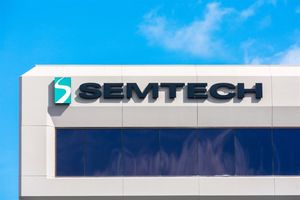
The global semiconductor foundry market is currently undergoing a seismic shift, fueled by the insatiable demand for advanced artificial intelligence (AI) chips and an intensifying geopolitical landscape. This critical sector, responsible for manufacturing the very silicon that powers our digital world, is witnessing an unprecedented race among titans like Taiwan Semiconductor Manufacturing Company (TSMC) (TPE: 2330), Samsung Foundry (KRX: 005930), and Intel Foundry Services (NASDAQ: INTC), alongside the quiet emergence of new players. As of October 3, 2025, the competitive stakes have never been higher, with each foundry vying for technological leadership and a dominant share in the burgeoning AI hardware ecosystem.
This fierce competition is not merely about market share; it's about dictating the pace of AI innovation, enabling the next generation of intelligent systems, and securing national technological sovereignty. The advancements in process nodes, transistor architectures, and advanced packaging are directly translating into more powerful and efficient AI accelerators, which are indispensable for everything from large language models to autonomous vehicles. The immediate significance of these developments lies in their profound impact on the entire tech industry, from hyperscale cloud providers to nimble AI startups, as they scramble to secure access to the most advanced manufacturing capabilities.
Engineering the Future: The Technical Arms Race in Silicon
The core of the foundry battle lies in relentless technological innovation, pushing the boundaries of physics and engineering to create ever-smaller, faster, and more energy-efficient chips. TSMC, Samsung Foundry, and Intel Foundry Services are each employing distinct strategies to achieve leadership.
TSMC, the undisputed market leader, has maintained its dominance through consistent execution and a pure-play foundry model. Its 3nm (N3) technology, still utilizing FinFET architecture, has been in volume production since late 2022, with an expanded portfolio including N3E, N3P, and N3X tailored for various applications, including high-performance computing (HPC). Critically, TSMC is on track for mass production of its 2nm (N2) node in late 2025, which will mark its transition to nanosheet transistors, a form of Gate-All-Around (GAA) FET. Beyond wafer fabrication, TSMC's CoWoS (Chip-on-Wafer-on-Substrate) 2.5D packaging technology and SoIC (System-on-Integrated-Chips) 3D stacking are crucial for AI accelerators, offering superior interconnectivity and bandwidth. TSMC is aggressively expanding its CoWoS capacity, which is fully booked until 2025, and plans to increase SoIC capacity eightfold by 2026.
Samsung Foundry has positioned itself as an innovator, being the first to introduce GAAFET technology at the 3nm node with its MBCFET (Multi-Bridge Channel FET) in mid-2022. This early adoption of GAAFETs offers superior electrostatic control and scalability compared to FinFETs, promising significant improvements in power usage and performance. Samsung is aggressively developing its 2nm (SF2) and 1.4nm nodes, with SF2Z (2nm) featuring a backside power delivery network (BSPDN) slated for 2027. Samsung's advanced packaging solutions, I-Cube (2.5D) and X-Cube (3D), are designed to compete with TSMC's offerings, aiming to provide a "one-stop shop" for AI chip production by integrating memory, foundry, and packaging services, thereby reducing manufacturing times by 20%.
Intel Foundry Services (IFS), a relatively newer entrant as a pure-play foundry, is making an aggressive push with its "five nodes in four years" plan. Its Intel 18A (1.8nm) process, currently in "risk production" as of April 2025, is a cornerstone of this strategy, featuring RibbonFET (Intel's GAAFET implementation) and PowerVia, an industry-first backside power delivery technology. PowerVia separates power and signal lines, improving cell utilization and reducing power delivery droop. Intel also boasts advanced packaging technologies like Foveros (3D stacking, enabling logic-on-logic integration) and EMIB (Embedded Multi-die Interconnect Bridge, a 2.5D solution). Intel has been an early adopter of High-NA EUV lithography, receiving and assembling the first commercial ASML TWINSCAN EXE:5000 system in its R&D facility, positioning itself to use it for its 14A process. This contrasts with TSMC, which is evaluating its High-NA EUV adoption more cautiously, planning integration for its A14 (1.4nm) process around 2027.
The AI research community and industry experts have largely welcomed these technical breakthroughs, recognizing them as foundational enablers for the next wave of AI. The shift to GAA transistors and innovations in backside power delivery are seen as crucial for developing smaller, more powerful, and energy-efficient chips necessary for demanding AI workloads. The expansion of advanced packaging capacity, particularly CoWoS and 3D stacking, is viewed as a critical step to alleviate bottlenecks in the AI supply chain, with Intel's Foveros offering a potential alternative to TSMC's CoWoS crunch. However, concerns remain regarding the immense manufacturing complexity, high costs, and yield management challenges associated with these cutting-edge technologies.
Reshaping the AI Ecosystem: Corporate Impact and Strategic Advantages
The intense competition and rapid advancements in the semiconductor foundry market are fundamentally reshaping the landscape for AI companies, tech giants, and startups alike, creating both immense opportunities and significant challenges.
Leading fabless AI chip designers like NVIDIA (NASDAQ: NVDA) and Advanced Micro Devices (AMD) (NASDAQ: AMD) are the primary beneficiaries of these cutting-edge foundry capabilities. NVIDIA, with its dominant position in AI GPUs and its CUDA software platform, relies heavily on TSMC's advanced nodes and CoWoS packaging to produce its high-performance AI accelerators. AMD is fiercely challenging NVIDIA with its MI300X chip, also leveraging advanced foundry technologies to position itself as a full-stack AI and data center rival. Access to TSMC's capacity, which accounts for approximately 90% of the world's most sophisticated AI chips, is a critical competitive advantage for these companies.
Tech giants with their own custom AI chip designs, such as Alphabet (Google) (NASDAQ: GOOGL) with its TPUs, Microsoft (NASDAQ: MSFT), and Apple (NASDAQ: AAPL), are also profoundly impacted. These companies increasingly design their own application-specific integrated circuits (ASICs) to optimize performance for specific AI workloads, reduce reliance on third-party suppliers, and achieve better power efficiency. Google's partnership with TSMC for its in-house AI chips highlights the foundry's indispensable role. Microsoft's decision to utilize Intel's 18A process for a chip design signals a move towards diversifying its sourcing and leveraging Intel's re-emerging foundry capabilities. Apple consistently relies on TSMC for its advanced mobile and AI processors, ensuring its leadership in on-device AI. Qualcomm (NASDAQ: QCOM) is also a key player, focusing on edge AI solutions with its Snapdragon AI processors.
The competitive implications are significant. NVIDIA faces intensified competition from AMD and the custom chip efforts of tech giants, prompting it to explore diversified manufacturing options, including a potential partnership with Intel. AMD's aggressive push with its MI300X and focus on a robust software ecosystem aims to chip away at NVIDIA's market share. For the foundries themselves, TSMC's continued dominance in advanced nodes and packaging ensures its central role in the AI supply chain, with its revenue expected to grow significantly due to "extremely robust" AI demand. Samsung Foundry's "one-stop shop" approach aims to attract customers seeking integrated solutions, while Intel Foundry Services is vying to become a credible alternative, bolstered by government support like the CHIPS Act.
These developments are not disrupting existing products as much as they are accelerating and enhancing them. Faster and more efficient AI chips enable more powerful AI applications across industries, from autonomous vehicles and robotics to personalized medicine. There is a clear shift towards domain-specific architectures (ASICs, specialized GPUs) meticulously crafted for AI tasks. The push for diversified supply chains, driven by geopolitical concerns, could disrupt traditional dependencies and lead to more regionalized manufacturing, potentially increasing costs but enhancing resilience. Furthermore, the enormous computational demands of AI are forcing a focus on energy efficiency in chip design and manufacturing, which could disrupt current energy infrastructures and drive sustainable innovation. For AI startups, while the high cost of advanced chip design and manufacturing remains a barrier, the emergence of specialized accelerators and foundry programs (like Intel's "Emerging Business Initiative" with Arm) offers avenues for innovation in niche AI markets.
A New Era of AI: Wider Significance and Global Stakes
The future of the semiconductor foundry market is deeply intertwined with the broader AI landscape, acting as a foundational pillar for the ongoing AI revolution. This dynamic environment is not just shaping technological progress but also influencing global economic power, national security, and societal well-being.
The escalating demand for specialized AI hardware is a defining trend. Generative AI, in particular, has driven an unprecedented surge in the need for high-performance, energy-efficient chips. By 2025, AI-related semiconductors are projected to account for nearly 20% of all semiconductor demand, with the global AI chip market expected to reach $372 billion by 2032. This shift from general-purpose CPUs to specialized GPUs, NPUs, TPUs, and ASICs is critical for handling complex AI workloads efficiently. NVIDIA's GPUs currently dominate approximately 80% of the AI GPU market, but the rise of custom ASICs from tech giants and the growth of edge AI accelerators for on-device processing are diversifying the market.
Geopolitical considerations have elevated the semiconductor industry to the forefront of national security. The "chip war," primarily between the US and China, highlights the strategic importance of controlling advanced semiconductor technology. Export controls imposed by the US aim to limit China's access to cutting-edge AI chips and manufacturing equipment, prompting China to heavily invest in domestic production and R&D to achieve self-reliance. This rivalry is driving a global push for supply chain diversification and the establishment of new manufacturing hubs in North America and Europe, supported by significant government incentives like the US CHIPS Act. The ability to design and manufacture advanced chips domestically is now considered crucial for national security and technological sovereignty, making the semiconductor supply chain a critical battleground in the race for AI supremacy.
The impacts on the tech industry are profound, driving unprecedented growth and innovation in semiconductor design and manufacturing. AI itself is being integrated into chip design and production processes to optimize yields and accelerate development. For society, the deep integration of AI enabled by these chips promises advancements across healthcare, smart cities, and climate modeling. However, this also brings significant concerns. The extreme concentration of advanced logic chip manufacturing in TSMC, particularly in Taiwan, creates a single point of failure that could paralyze global AI infrastructure in the event of geopolitical conflict or natural disaster. The fragmentation of supply chains due to geopolitical tensions is likely to increase costs for semiconductor production and, consequently, for AI hardware.
Furthermore, the environmental impact of semiconductor manufacturing and AI's immense energy consumption is a growing concern. Chip fabrication facilities consume vast amounts of ultrapure water, with TSMC alone reporting 101 million cubic meters in 2023. The energy demands of AI, particularly from data centers running powerful accelerators, are projected to cause a 300% increase in CO2 emissions between 2025 and 2029. These environmental challenges necessitate urgent innovation in sustainable manufacturing practices and energy-efficient chip designs. Compared to previous AI milestones, which often focused on algorithmic breakthroughs, the current era is defined by the critical role of specialized hardware, intense geopolitical stakes, and an unprecedented scale of demand and investment, coupled with a heightened awareness of environmental responsibilities.
The Road Ahead: Future Developments and Predictions
The future of the semiconductor foundry market over the next decade will be characterized by continued technological leaps, intense competition, and a rebalancing of global supply chains, all driven by the relentless march of AI.
In the near term (1-3 years, 2025-2027), we can expect TSMC to begin mass production of its 2nm (N2) chips in late 2025, with Intel also targeting 2nm production by 2026. Samsung will continue its aggressive pursuit of 2nm GAA technology. The 3nm segment is anticipated to see the highest compound annual growth rate (CAGR) due to its optimal balance of performance and power efficiency for AI, 5G, IoT, and automotive applications. Advanced packaging technologies, including 2.5D and 3D integration, chiplets, and CoWoS, will become even more critical, with the market for advanced packaging expected to double by 2030 and potentially surpass traditional packaging revenue by 2026. High-Bandwidth Memory (HBM) customization will be a significant trend, with HBM revenue projected to soar by up to 70% in 2025, driven by large language models and AI accelerators. The global semiconductor market is expected to grow by 15% in 2025, reaching approximately $697 billion, with AI remaining the primary catalyst.
Looking further ahead (3-10 years, 2028-2035), the industry will push beyond 2nm to 1.6nm (TSMC's A16 in late 2026) and even 1.4nm (Intel's target by 2027, Samsung's by 2027). A holistic approach to chip architecture, integrating advanced packaging, memory, and specialized accelerators, will become paramount. Sustainability will transition from a concern to a core innovation driver, with efforts to reduce water usage, energy consumption, and carbon emissions in manufacturing processes. AI itself will play an increasing role in optimizing chip design, accelerating development cycles, and improving yield management. The global semiconductor market is projected to surpass $1 trillion by 2030, with the foundry market reaching $258.27 billion by 2032. Regional rebalancing of supply chains, with countries like China aiming to lead in foundry capacity by 2030, will become the new norm, driven by national security priorities.
Potential applications and use cases on the horizon are vast, ranging from even more powerful AI accelerators for data centers and neuromorphic computing to advanced chips for 5G/6G communication infrastructure, electric and autonomous vehicles, sophisticated IoT devices, and immersive augmented/extended reality experiences. Challenges that need to be addressed include achieving high yield rates on increasingly complex advanced nodes, managing the immense capital expenditure for new fabs, and mitigating the significant environmental impact of manufacturing. Geopolitical stability remains a critical concern, with the potential for conflict in key manufacturing regions posing an existential threat to the global tech supply chain. The industry also faces a persistent talent shortage in design, manufacturing, and R&D.
Experts predict an "AI supercycle" that will continue to drive robust growth and reshape the semiconductor industry. TSMC is expected to maintain its leadership in advanced chip manufacturing and packaging (especially 3nm, 2nm, and CoWoS) for the foreseeable future, making it the go-to foundry for AI and HPC. The real battle for second place in advanced foundry revenue will be between Samsung and Intel, with Intel aiming to become the second-largest foundry by 2030. Technological breakthroughs will focus on more specialized AI accelerators, further advancements in 2.5D and 3D packaging (with HBM4 expected in late 2025), and the widespread adoption of new transistor architectures and backside power delivery networks. AI will also be increasingly integrated into the semiconductor design and manufacturing workflow, optimizing every stage from conception to production.
The Silicon Crucible: A Defining Moment for AI
The semiconductor foundry market stands as the silicon crucible of the AI revolution, a battleground where technological prowess, economic might, and geopolitical strategies converge. The fierce competition among TSMC, Samsung Foundry, and Intel Foundry Services, combined with the strategic rise of other players, is not just about producing smaller transistors; it's about enabling the very infrastructure that will define the future of artificial intelligence.
The key takeaways are clear: TSMC maintains its formidable lead in advanced nodes and packaging, essential for today's most demanding AI chips. Samsung is aggressively pursuing an integrated "one-stop shop" approach, leveraging its memory and packaging expertise. Intel is making a determined comeback, betting on its 18A process, RibbonFET, PowerVia, and early adoption of High-NA EUV to regain process leadership. The demand for specialized AI hardware is skyrocketing, driving unprecedented investments and innovation across the board. However, this progress is shadowed by significant concerns: the precarious concentration of advanced manufacturing, the escalating costs of cutting-edge technology, and the substantial environmental footprint of chip production. Geopolitical tensions, particularly the US-China tech rivalry, further complicate this landscape, pushing for a more diversified but potentially less efficient global supply chain.
This development's significance in AI history cannot be overstated. Unlike earlier AI milestones driven primarily by algorithmic breakthroughs, the current era is defined by the foundational role of advanced hardware. The ability to manufacture these complex chips is now a critical determinant of national power and technological leadership. The challenges of cost, yield, and sustainability will require collaborative global efforts, even amidst intense competition.
In the coming weeks and months, watch for further announcements regarding process node roadmaps, especially around TSMC's 2nm progress and Intel's 18A yields. Monitor the strategic partnerships and customer wins for Samsung and Intel as they strive to chip away at TSMC's dominance. Pay close attention to the development and deployment of High-NA EUV lithography, as it will be critical for future sub-2nm nodes. Finally, observe how governments continue to shape the global semiconductor landscape through subsidies and trade policies, as the "chip war" fundamentally reconfigures the AI supply chain.
This content is intended for informational purposes only and represents analysis of current AI developments.
TokenRing AI delivers enterprise-grade solutions for multi-agent AI workflow orchestration, AI-powered development tools, and seamless remote collaboration platforms. For more information, visit https://www.tokenring.ai/.






